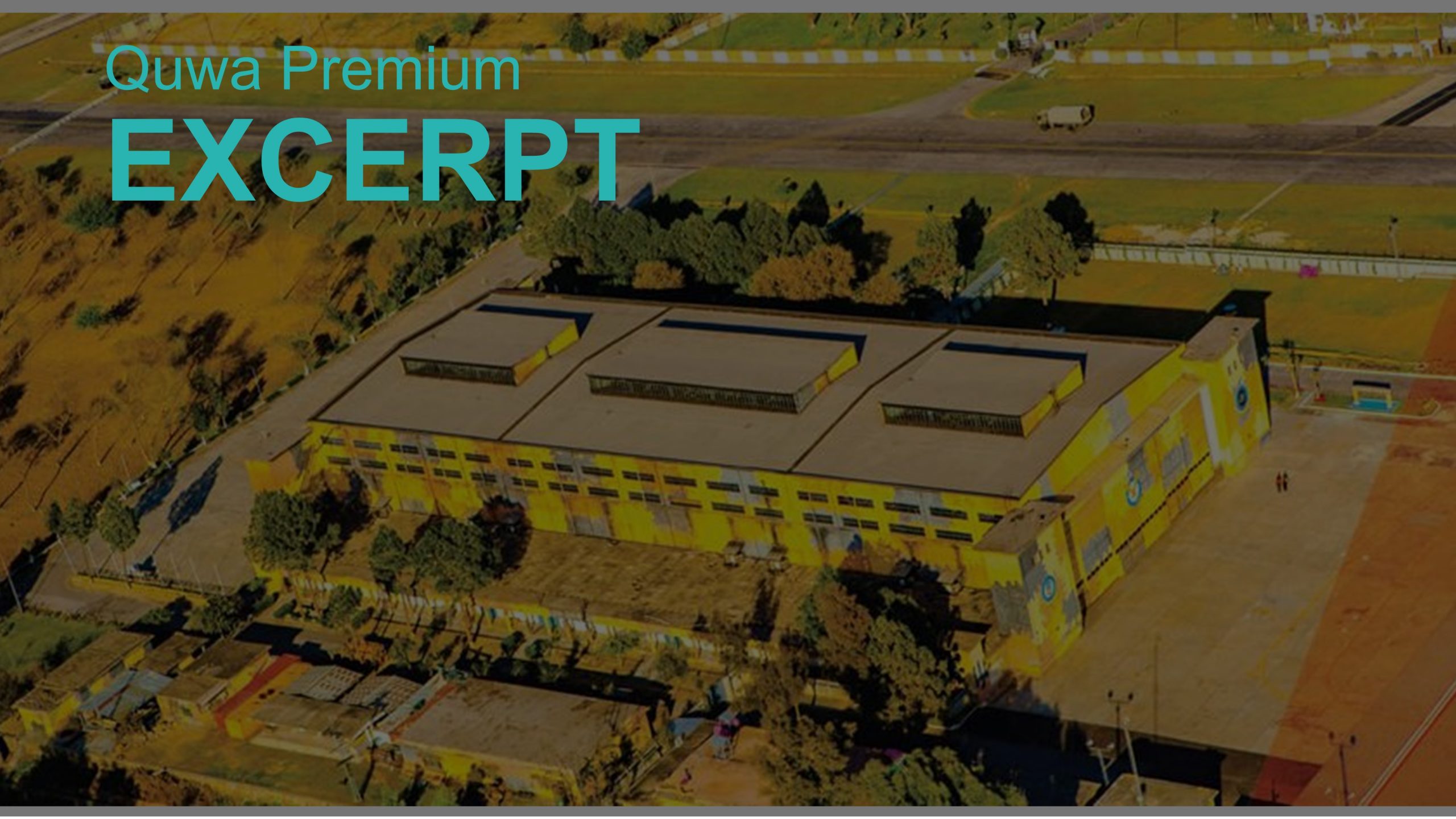1732Views

2024 Pakistan Day Parade Recap
On its annual Pakistan Day parade, the Pakistani military showcased a number of its newly inducted hardware, including new air defence equipment, main battle tanks (MBT), and artillery systems.
Heavy Industries Taxila (HIT) Haider MBT
HIT Haider tank leading the armored contingent at the Pakistan Day Parade 2024, followed by Al-Khalid-1 & VT-4 tanks. 🇵🇰
Haider is the License-produced VT-4 🇨🇳 with multiple Pakistani sub-components. pic.twitter.com/LUgltmzZIc
— Umair Aslam (@Defense785) March 24, 2024
The Pakistan Army (PA) debuted its new ‘Haider’ MBT, which is a variant of the NORINCO VT4 built by Heavy Industries Taxila (HIT). HIT rolled out its first Haider in March of this year under a ‘pilot project’ in collaboration with NORINCO. The Haider/VT4 is a central piece of the PA’s armour modernization efforts, with reports pegging a procurement run of up to 679 units…
End of excerpt. Subscribe to Quwa Premium to read the rest of this section.
Indigenous Short-Range 3D Phased-Array Radar
Pakistan Air Force (Air Defense Command) continent at Pakistan Day Parade 2024 🇵🇰
1. NASTP Short Range 3D Phased Array Radar System
2. YLC-6MS Surveillance Radar System
3. HQ-9 Bravo Air Defense System
4. SPADA-2000 missile launchers coupled with RAC-3D Radar System pic.twitter.com/fBLyweOaSU— Umair Aslam (@Defense785) March 25, 2024
The Pakistan Air Force (PAF) revealed its first locally produced radar, i.e., the ‘short-range air defence radar’ (SRAD). Though the PAF marketed the SRAD as a National Aerospace Science and Technology Park (NASTP) solution, the SRAD’s development predates NASTP. The SRAD is reportedly among five new ground-based short- and medium-range radars under development in Pakistan.
The SRAD’s debut shows that domestically designed solutions are playing a growing part in Pakistan’s defence modernization efforts. In this case, the PAF is using its original radar systems to further close its low-altitude coverage gaps, augmenting the newly procured TPS-77 MRR, YLC-18A, and upgraded Mobile-Pulse Doppler Radar (MPDR) systems in the role…
End of excerpt. Subscribe to Quwa Premium to read the rest of this section.
Fatah-Series of Surface-to-Surface Missiles (SSM)
🇵🇰FATAH II
🚀Guided multiple lunch rocket system
Rang : 400 KM pic.twitter.com/7jF4oFY8iG
— PCA Abdullah official 𓃵 (@PCAAbdullah_) March 23, 2024
Pakistan is making new in-roads in its ballistic missile technology. Until 2021, the bulk of its ballistic missiles were strategic weapons, like the Shaheen-series. However, from 2021, the PA began fielding guided artillery rockets, starting with the 140 km-range Fatah-1. This signalled an evolution in the PA’s doctrine as it essentially inducted a stand-off range precision-strike capability through the Fatah-1. In January, the PA tested a longer-ranged (400 km) SSM called the Fatah-2.
Both the Fatah-1 and Fatah-2 were shown at the parade, and the visuals confirmed an earlier analysis of Quwa of the Fatah-2 being a larger missile requiring a two-cell launcher. In contrast, the Fatah-I is deployable from an eight-cell launcher.
The officials announcing the event also confirmed that new versions of the missile – i.e., Fatah-3 and Fatah-4 – are in development. The Fatah-3 will have a range of 450 km, while the Fatah-4 will provide a range of 700 km. Thus, the Fatah-series seems to be an entire family of new ballistic missiles…
End of excerpt. Subscribe to Quwa Premium to read the rest of this section.
New Air Defence Systems
🇵🇰HQ-9BE HIMAD ground based Surface to Air Missile System.
🚀300 KM range pic.twitter.com/O7A60ryWNS
— PCA Abdullah official 𓃵 (@PCAAbdullah_) March 23, 2024
The PA and PAF showed their newly inducted surface-to-air missile (SAM) systems, highlighting the extensive work both service arms put into their air defence systems in recent years.
The Army’s HQ-9/P long-range SAM made an appearance. Inducted in 2021, the HQ-9/P offers a confirmed range of 125 km. The HQ-9/P complements the LY-80, which the PA inducted in 2017. Interestingly, the event announcers stated that the PA’s LY-80 systems now have a range of 70 km, confirming that the previously revealed ‘LY-80EV’ is the improved HQ-16 variant, which was revealed in 2016 (see Quwa’s analysis on the Army’s air defence system for more details).
The PAF’s HQ-9BE long-range SAM also made its public debut. According to the announcers, the HQ-9BE offers a range of up to 300 km and altitude reach of 30 km. Interestingly, these specifications are different from those on CASIC’s official materials, which state that the HQ-9BE has a range of 260 km and altitude reach of 27 km. The Spada 2000-Plus also made an appearance, but the event officials stated that it has a range of 40 km, rather than the 25+ km found on MBDA’s material. The PAF did not showcase the HQ-16FE, but it confirmed inducting the system (learn more about the PAF’s decade-long development programs on Quwa’s new quarterly report).
Project ‘PFX’
During a solo demonstration flight of the JF-17 Thunder multirole fighter, the parade announcers said that the PAF has “embarked on [the] design and development of [an] indigenous fighter aircraft under the banner of ‘PFX,’ the flagship national project of strategic significance.”
Interestingly, the announcers did not mention the JF-17 as part of the PFX. However, past PAF material regarding the PFX have shown it in relation to the JF-17. Thus, it is unlikely that the PFX is a new/clean-sheet fighter program. Rather, it seems that the PFX is a continuation of the JF-17, either a new block or, potentially, an effort to manufacture the fighter on a turnkey basis by buying the Aviation Industry Corporation of China (AVIC)’s share in the program.
There are several reasons why the PAF may need to take full ownership of the JF-17.
Firstly, AVIC does not need to market the JF-17 as it has a more capable solution in the J-10CE (which the PAF also inducted) and a more affordable lightweight fighter option in the L-15B (which the PAF is interested in). In fact, AVIC has seen more success with the L-15B than it has with the JF-17. In reality, the JF-17 serves a niche requirement, and the countries that would need such jets the most actually have their own projects (e.g., Tejas and FA-50). Thus, a small market with many options does not give AVIC much flexibility in terms of driving profitable sales. Moreover, AVIC now has the systems it needs to engage higher value markets, like the Middle East and North Africa, through the J-10CE and J-31…
End of excerpt. Subscribe to Quwa Premium to read the rest of this section.
End of Excerpt (854/2,296 words)
You can read the complete article by logging in (click here) or subscribing to Quwa Premium (click here).
For Pakistani defence news and insights, see:


